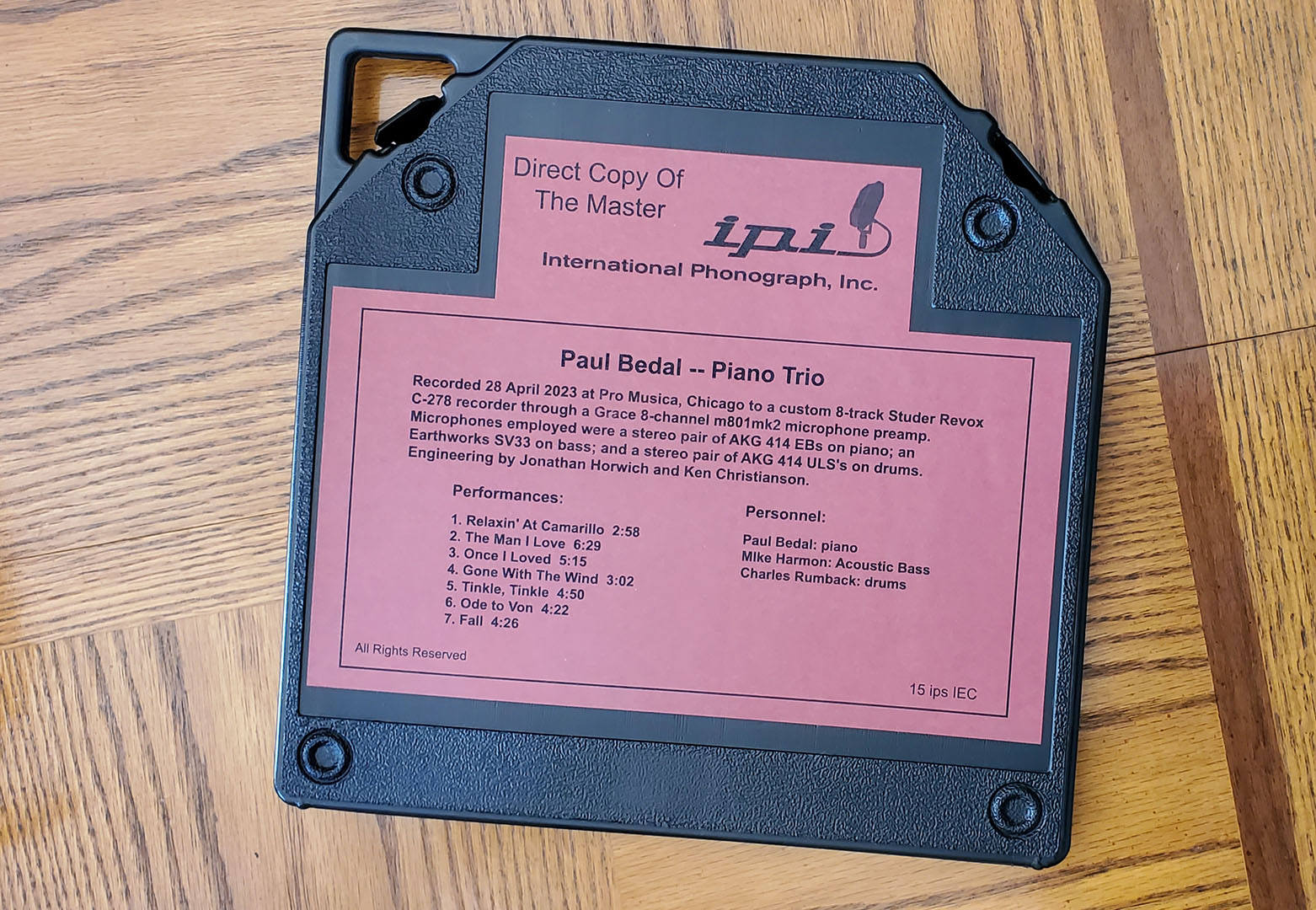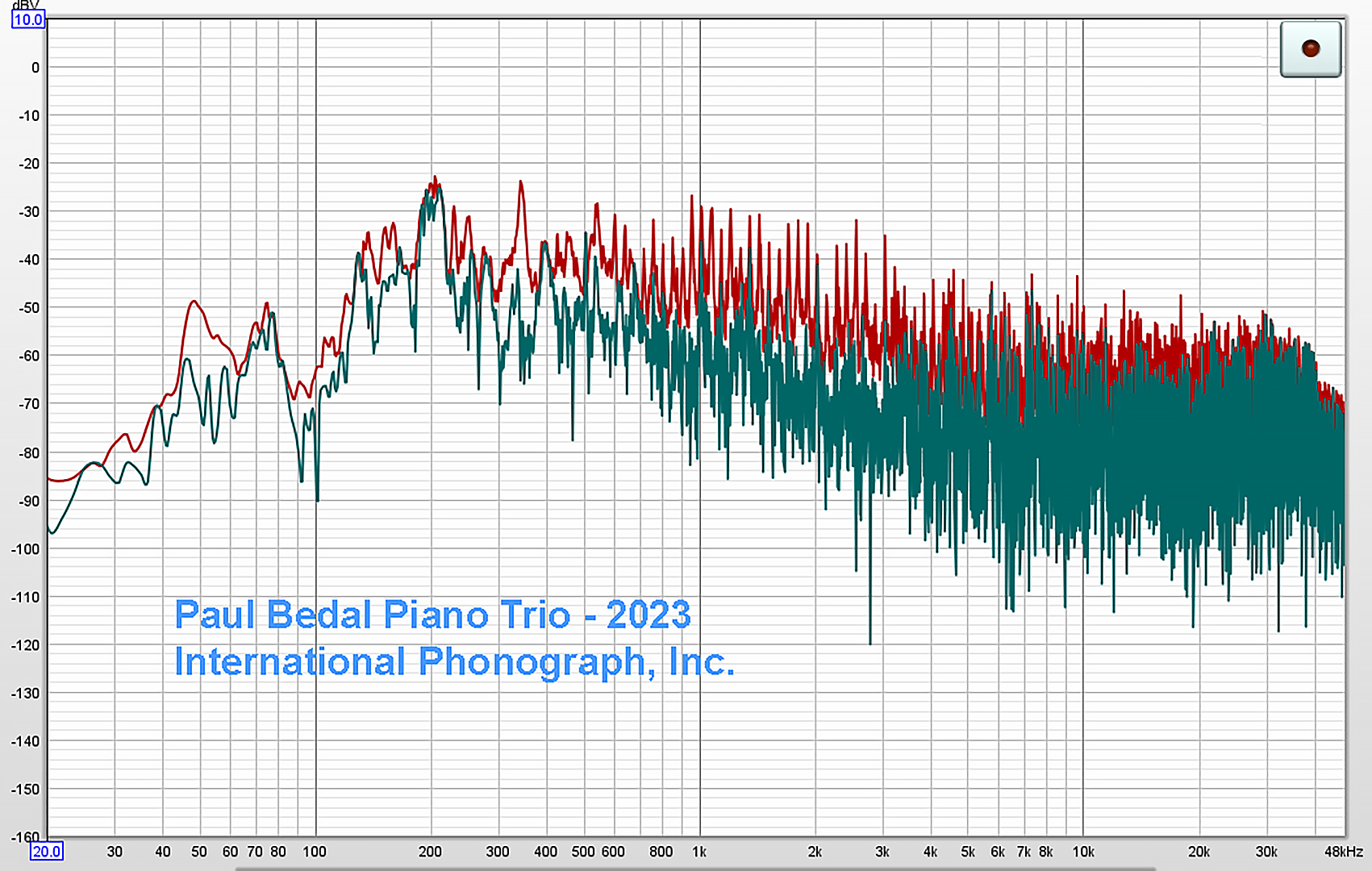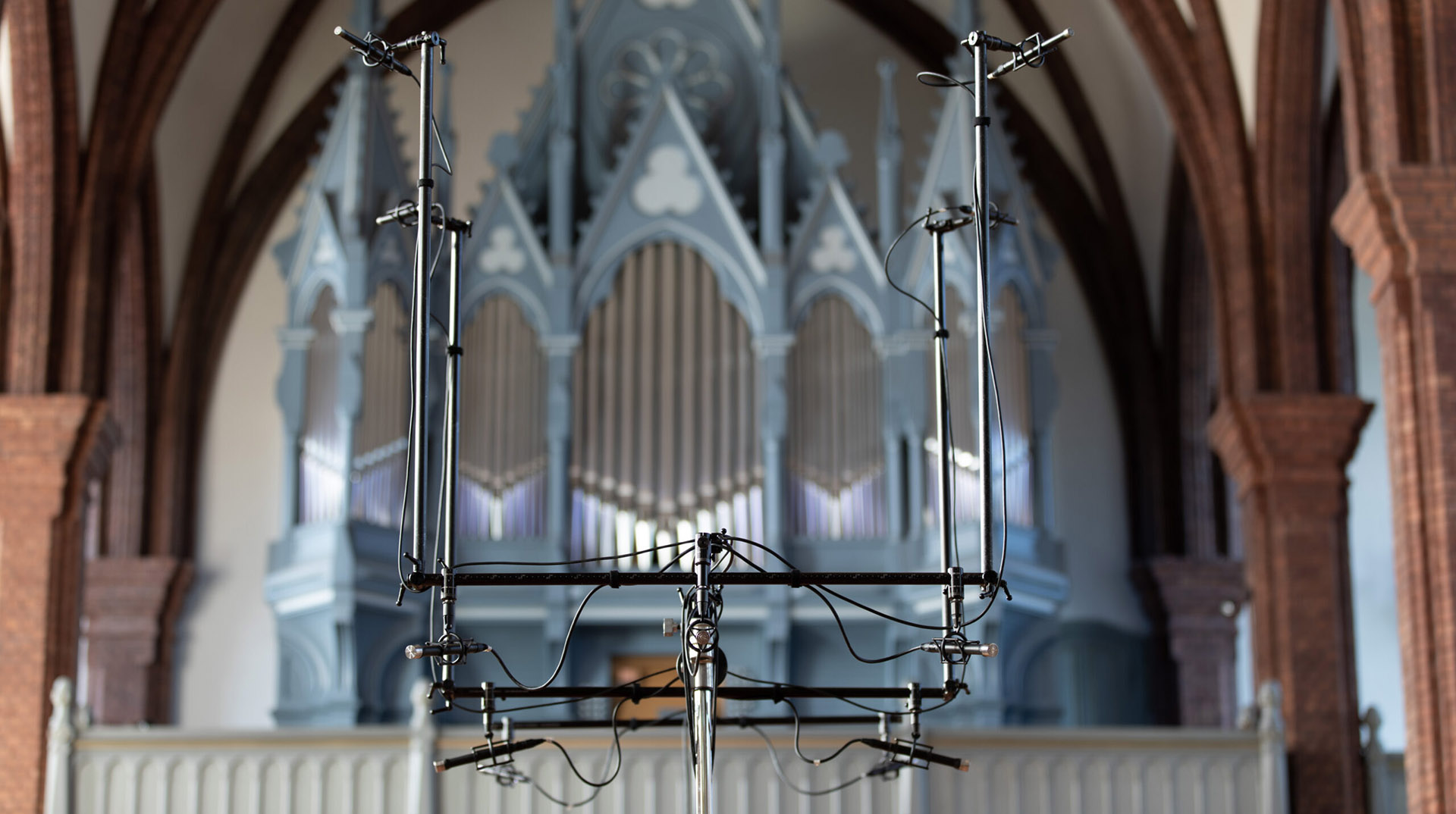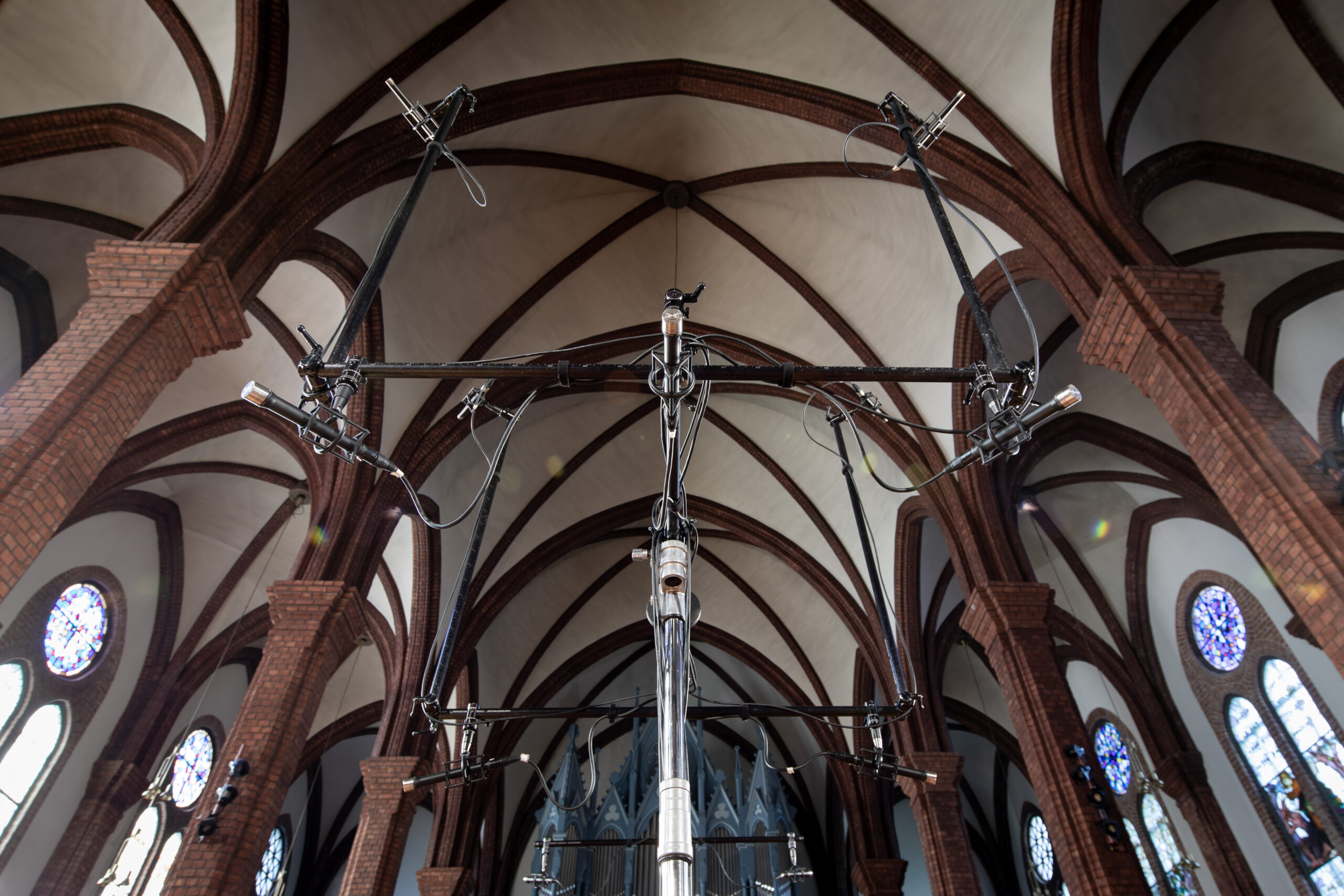New music recordings are put on the virtual music store shelves every day. Most of them are now 24/96 stereo, whereas they used to be 16/44.1. That’s good. Another new music format has also arrived: 7 channel or 9 channel Dolby Atmos®. 2L of Norway just released a new album in 7.04 Dolby Atmos, entitled An Old Hall Ladymass, with the Trio Mediaeval. It is really something else and is a showcase for what is to come in music: surround sound.
But first, I want to show you a new magnetic tape modern jazz recording from International Phonograph, Inc. (IPI), entitled Paul Bedal Piano Trio (2023). IPI did the recording themselves a month or so ago, using a customized 8-track Studer tape deck. It was recorded at 15 IPS (Inches per Second). This is called the “Session Master”, and the tracks are cut and spliced so that the time in between tracks is adjusted to the correct length without any talking except for announcing the title of the track about to be recorded. When a new album is initially announced, direct copies of the session master, called 1st generation copies, are available for $150 plus $25 for shipping, and they are at 15 IPS. After that initial run of 1st generation copies for continuing subscribers, 1st generation copies are available for $250 plus shipping. Here is a link.
You can also purchase copies of a 1st generation copy, called 2nd generation copies, for $150 plus shipping. (You can’t imagine the amount of confusion I went through in creating this paragraph so I could understand what the hell I was talking about.) RTM SM90 tape is used throughout.
If you have a tape deck capable of playing tapes at 15 IPS, you should get on their subscriber mailing list so you can obtain a direct copy (1st generation copy) of the master when they are released, although the difference between the 1st generation copy and a 2nd generation copy is negligible.
Here is a short video of Jonathan Horwich recording the album (Copyright 2023 IPI):
A large photo of the album cover with the tracks listed is shown below. You can click on the photo to see it in full size, which will let you read the track titles and other info.
The sound is impeccable, the best I have heard from IPI, and I particularly like this recording because they used two microphones to record the drums (two for piano, one for upright string bass), and the velvety sound of the ride cymbal is astonishing. Try listening to a tape like this one using a good pair of headphones plugged directly into the tape deck. It will leave you breathless. It is pure analog at its finest.
A spectral analysis of a typical track shows a frequency response all the way out to 40 kHz, which is further evidence of how great this tape is. The green spectrum is an instantaneous image, while the red spectrum shows the peaks accumulating during a 30 second period. The peaks at the high frequency end are from the ride cymbal, the peaks in the middle are the piano, and the ones at the lower end are the string bass and the bass drum in the drum set. The spectrum was taken from the tape deck’s XLR balanced line-out direct to the spectrum analyzer rather than going through an additional preamplifier, and it is about 125 mV on average.
An Old Hall Ladymass, with the Trio Mediaeval. 2L Norway, 7.04 Dolby Atmos, 5.0 DTS-HD MA 24/192, 7.0.4 Auro-3D 96 kHz. 36 € (Euros), $38.71 USD. Here is a link.
As I mentioned, surround sound music is here. 2L of Norway is a leader in this music category. Their latest release consists of a trio of female voices (The Trio Mediaeval) with a fourth person playing what is called an Organetto. The music is motets and mass movements from the Medieval times (15th century).
Following are some photos of the recording setup. For the Dolby Atmos version, it has sound in the front left/right, center, side surround left/right and rear surround left/right.
You can see the huge array of microphones used. They deliver a spatial sound in the recording that has to be heard to be believed. This goes wayyyyyy beyond two-channel stereo. Rather than the sound of particular people or instruments coming from individual speakers, like they did when stereo was first available back in the 1950’s, the sound comes from the stage, like it would if you were sitting in front of the singers. It is beautifully recorded and sounds very, very natural, like you are in the church live.
I hope that 2L will release some modern jazz and symphonic music (Beethoven, Mozart, etc.) in the future because their recording quality is superlative.
John E. Johnson, Jr., Editor-in-Chief, Emeritus








